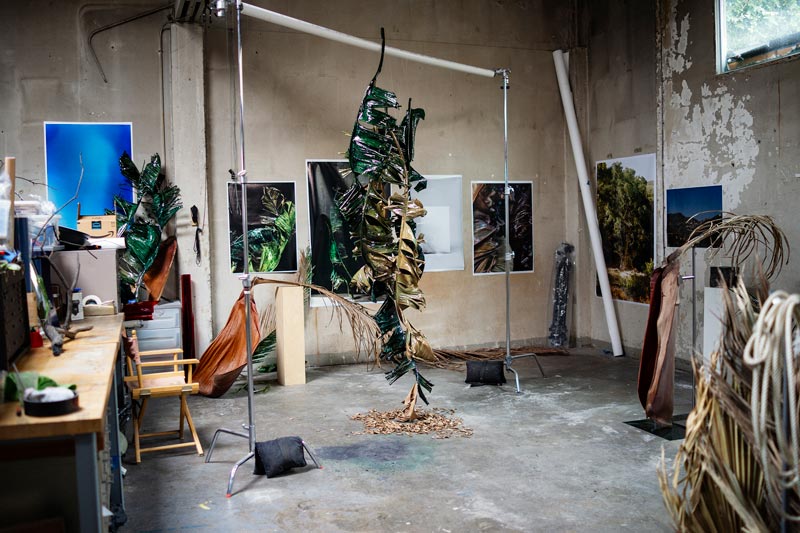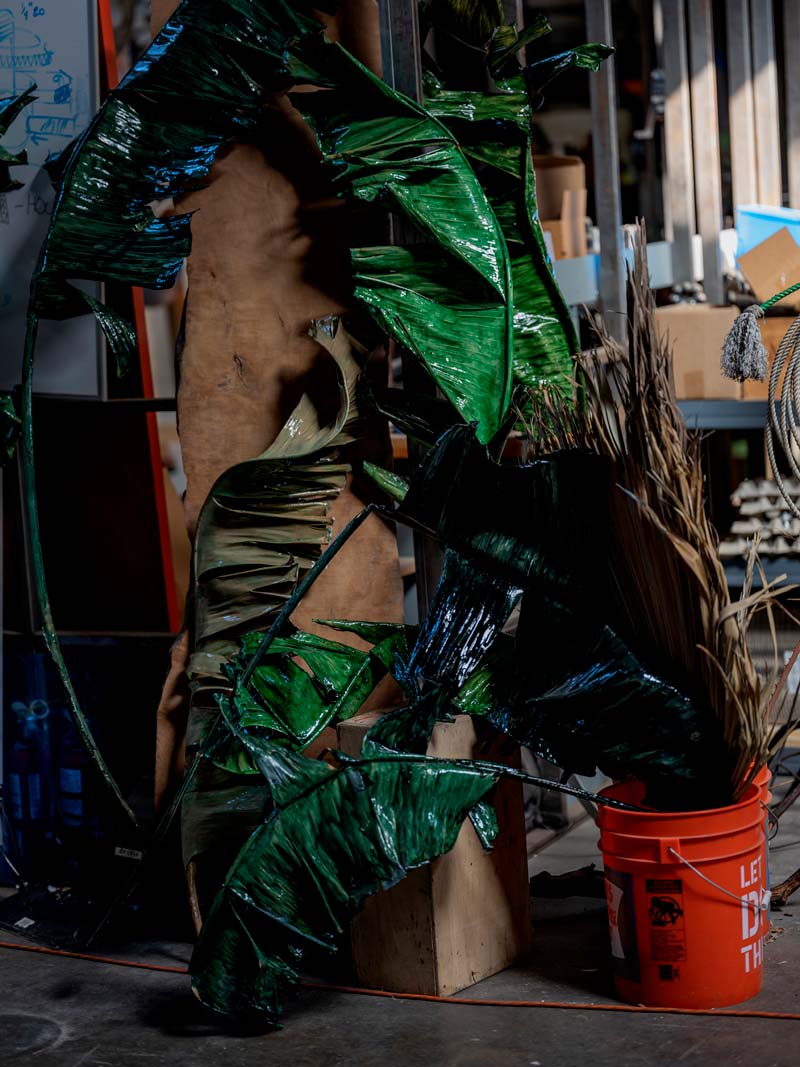Visual Artist based in Los Angeles, CA
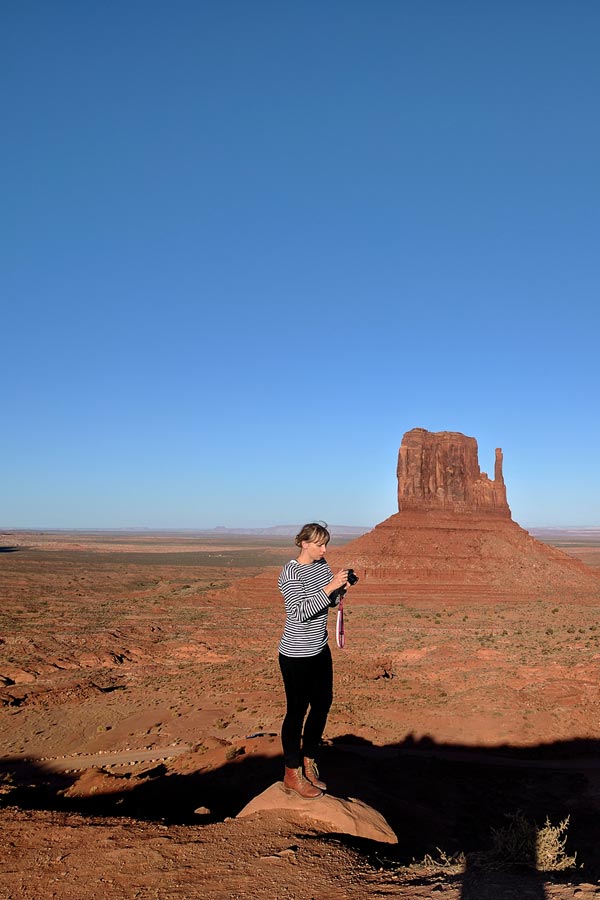
Christine Atkinson, Portrait of the Artist
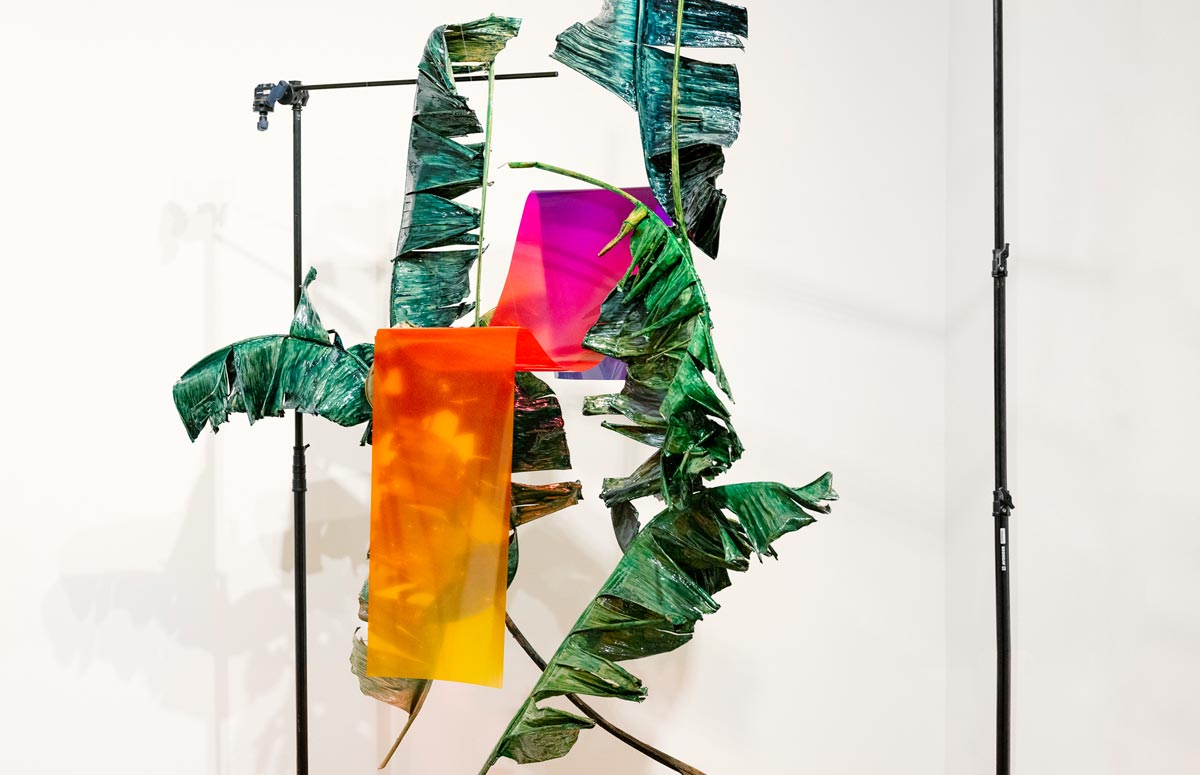
Of Paradise II (Los Angeles)
2019, Strelitzia nicolai leaves, epoxy, green, yellow, black and brown dye, half magenta Lee Cinema Gel, 100 x 156 x 96 inches
When did you know you wanted to be an artist?
When I was a child, I asked for a camera as a reward for doing chores all summer. From then on, I photographed compulsively until I went to undergrad, where I studied commercial photography. I made the transition from wanting to be a traditional photographer to an artist when I left undergrad. I realized I didn’t understand why I was doing any of it. I knew how to make photographs, but I didn’t know what they meant and I didn’t know why I was making them. There were images everywhere – beautiful wonderful images – and I began wondering why I should make more. I still work with photography and I think that I am always in conversation with the medium – everything I make has, I guess, the flavor of photography to it – but it has been so exciting to move into sculpture and installation.
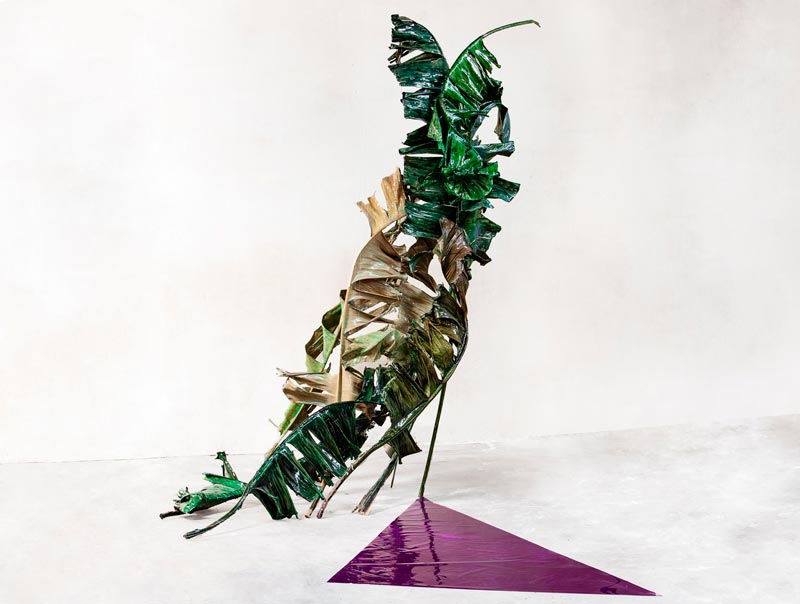
Of Paradise II (Los Angeles)
2019, Strelitzia nicolai leaves, epoxy, green, yellow, black and brown dye, half magenta Lee Cinema Gel, 100 x 156 x 96 inches
"I bring objects that I find out in the world . . . and let them sit in the studio until they start to resolve themselves . . . the longer that they stay with me the more I think I will change them. I don’t ever see my work as one piece or one series, but as different thoughts about the same question. In that sense they are always evolving."
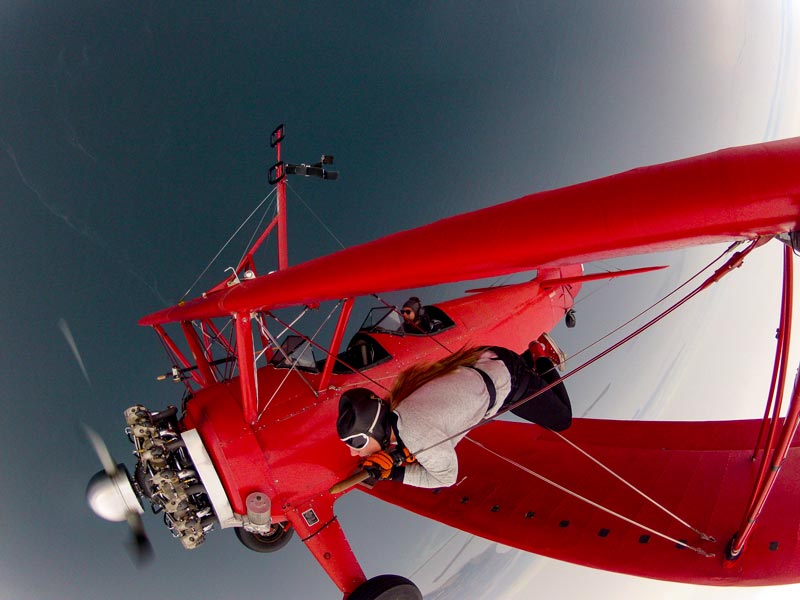
Portrait of the Artist
What are you currently working on and where did the inspiration for it come from?
I grew up in the country and have always loved the outdoors, so when I moved to Los Angeles I wanted to better understand the landscape. Los Angeles is such a strange place. You can start in an area of intense humanity and in ten minutes find yourself in the hills that have mountain lions and bears. I saw a bobcat in my front yard one morning. The California floristic province is a place of incredible biodiversity; we have more native plants than the other 47 contiguous states combined. Yet the palm tree has become symbolic to Los Angeles and we fill the city with imported plants, many of which are the products of colonialism, and we are erasing the original identity of the land.
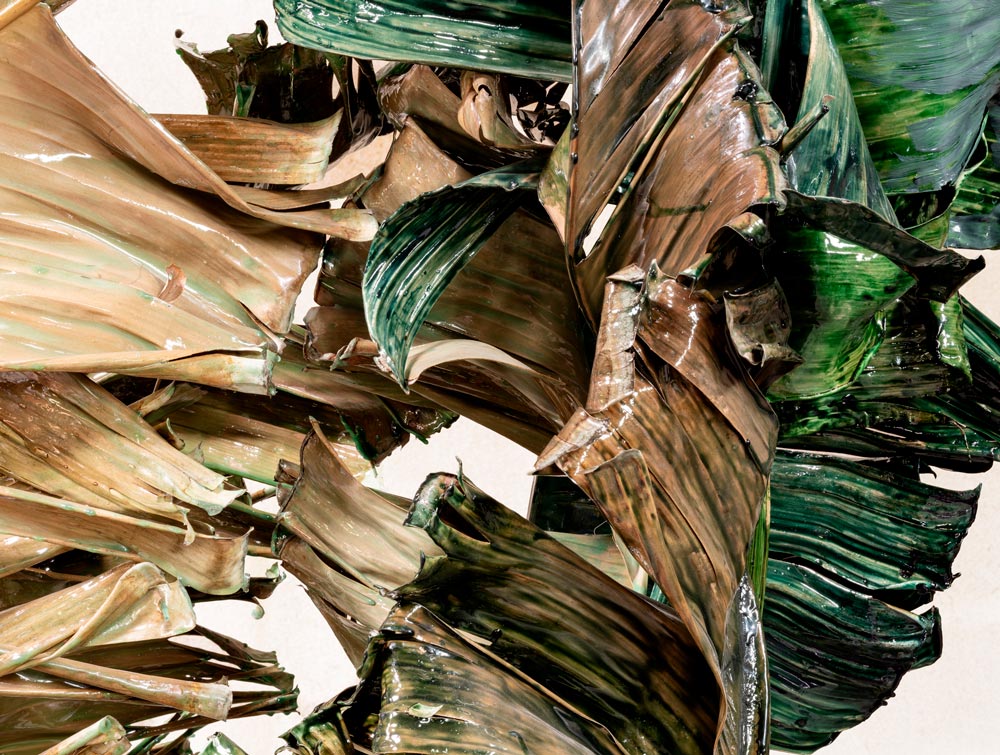 Detail of Sculpture
Detail of Sculpture
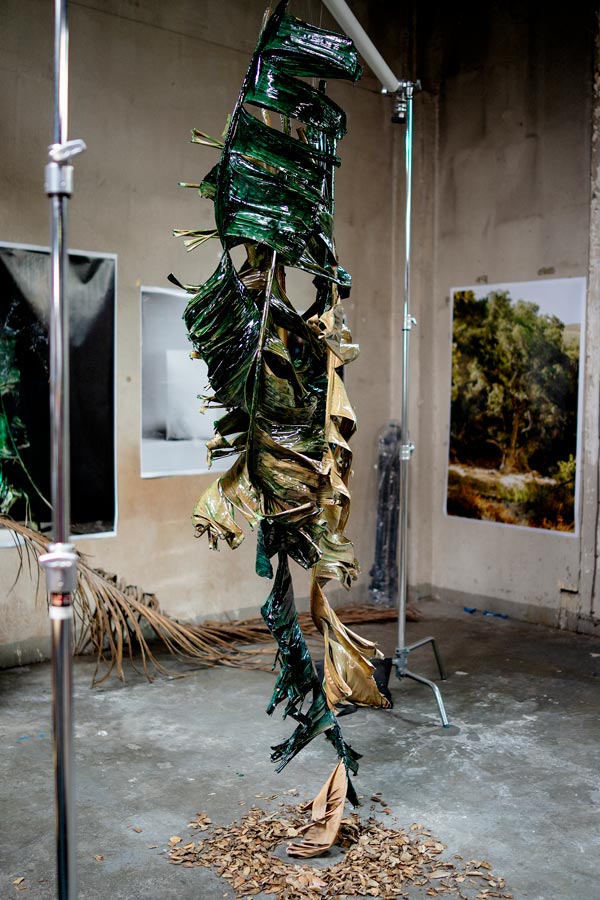
Installation in Progress
Unraveling that landscape has the main focus of my current work. I started by collecting giant bird of paradise fronds - the bird of paradise is the city flower of Los Angeles but hails from the eastern side of South Africa – and began painting the fronds in various shades of green epoxy to give them the veneer of life and lushness. Historian Jared Farmer writes about how the settlers of Southern California wanted to change the landscape, to make it more green, to “emparadise” it. Color has been the driving force behind my work for many years, and the direct connection between a desire for color and the landscape was the starting point for me with this new body of work. The green in this work is always plastic. Shiny, fake plastic: it looks almost inviting, almost like a living green, but it is a mimic, a stand-in, something that covers and consumes.
Innovation does not only happen in the field of technology — it occurs everyday in an artist's practice. What do you do for inspiration?
I love looking at art. I love seeing it in person and being a part of the experience and then reading what has been said about it. It makes me feel so connected to the world and to my peers. It helps me understand how other artists have worked through problems and asked questions. I read as much as I can. I love getting lost in others' thoughts and then finding that one sentence that sparks a connection. I also talk to myself in the car; saying things out loud helps me clarify my thoughts.
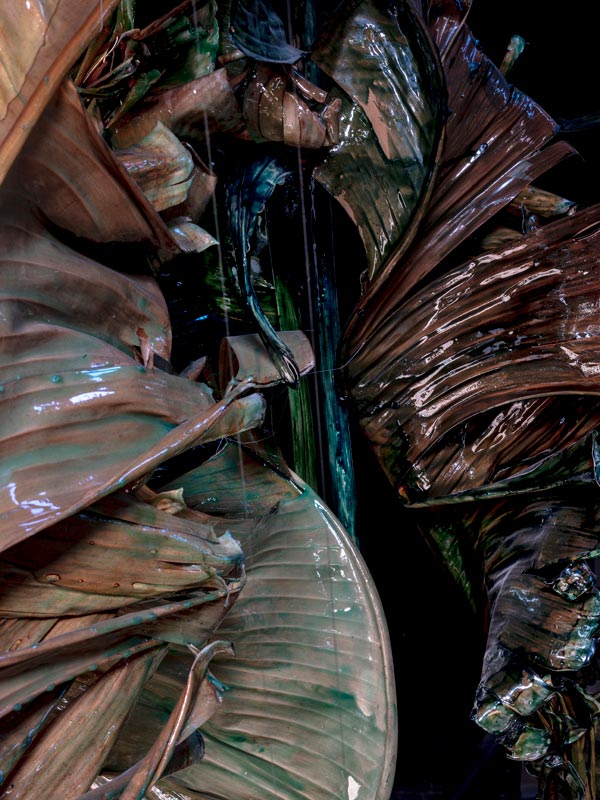
Green of Desire III, 2019, Inkjet Print, 30 x 40 inches
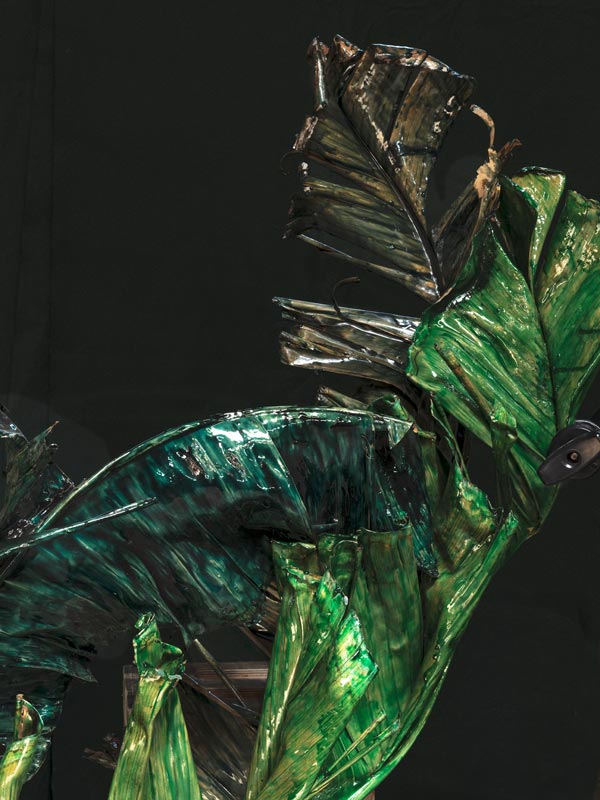
Green of Desire II, 2019, Inkjet Print, 27 x 36 inches
Where do ideas start for you? In the studio or being in the world?
I would say a little of both. I bring objects that I find out in the world, like the King Palm fronds, and then let them sit in the studio until they start to resolve themselves. I found the fronds, for example, while driving around after strong wind storm. They hung out for a few months before I started to work with them, and the longer that they stay with me the more I think I will change them. I don’t ever see my work as one piece or one series, but as different thoughts about the same question. In that sense they are always evolving.
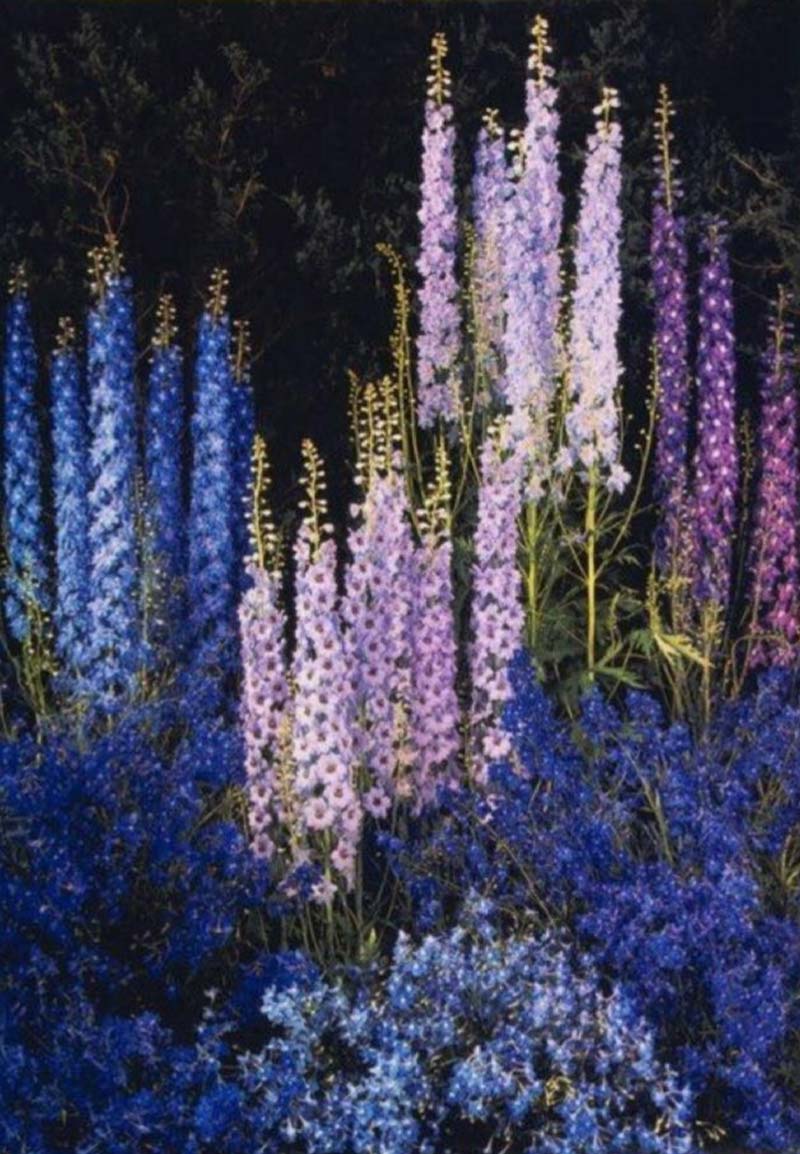
Alfred Stieglitz took this image at the out break of WWII. It is of his prize winning Delphiniums. He was a advocate for color photography and also an avid gardener. I am drawn to this image for its stark lighting, intense color and the feeling of unease in the face of on coming war.
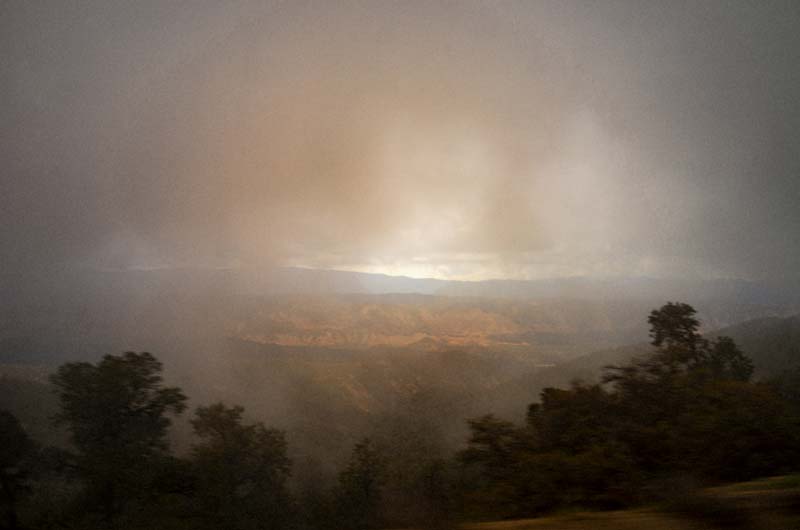
This was taken on a trip out to the Carrizo National Monument.
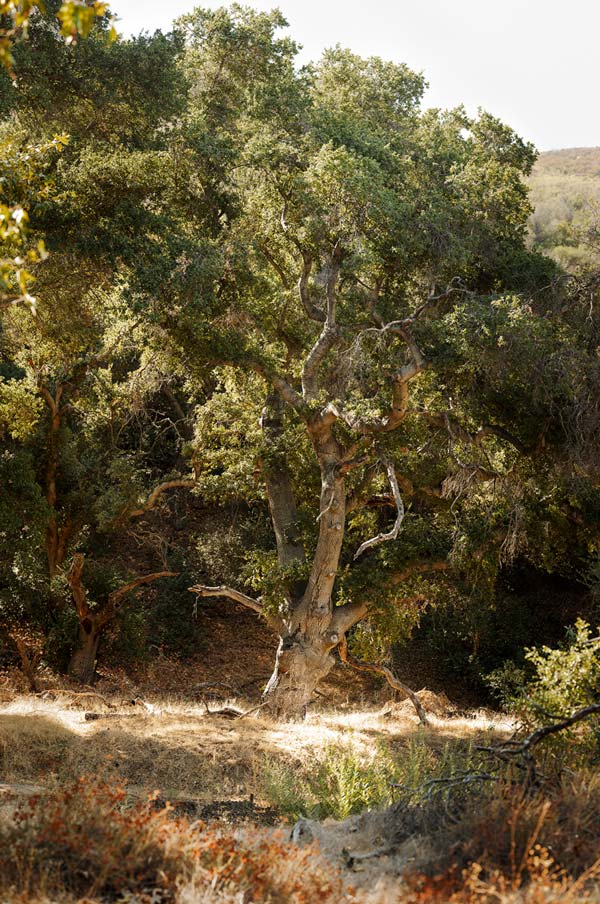
This is part of the research I am doing into historic and notable trees in and around Los Angeles. This is not the actual oak of the golden dream but just an image that I am using for reference for an upcoming piece.
How do you make your work? Where do you start and how does the process evolve?
I don’t work towards a specific result. Often I start something more out of curiosity about how the material is to be activated by specific conditions. I will have a basic premise of how I think something is going to come together, but I find that if I force the materials into a predetermined shape then there is something lacking and I didn't learn anything about the process except how to control it. When I let materials drift, lay or balance how they naturally want to, there can be more of a a conversation between the materials and myself.
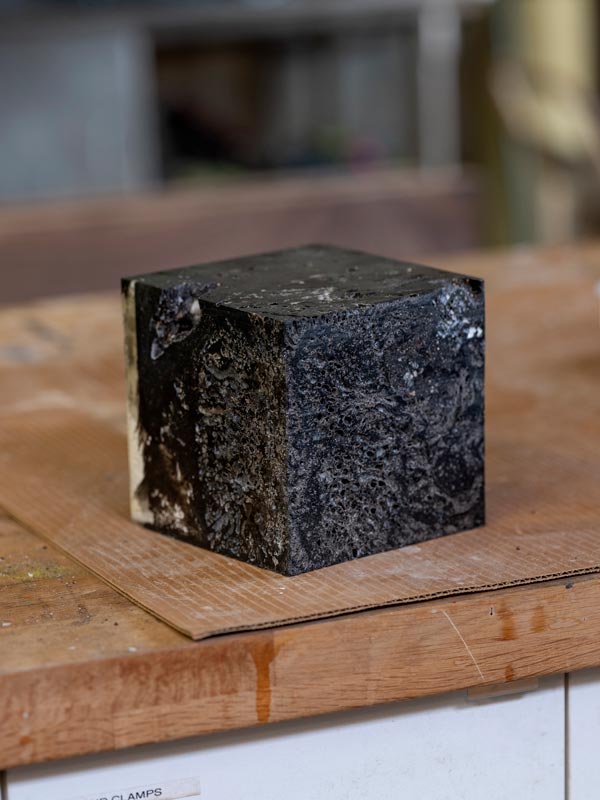
In Process Cube, epoxy, wildfire debris, salt
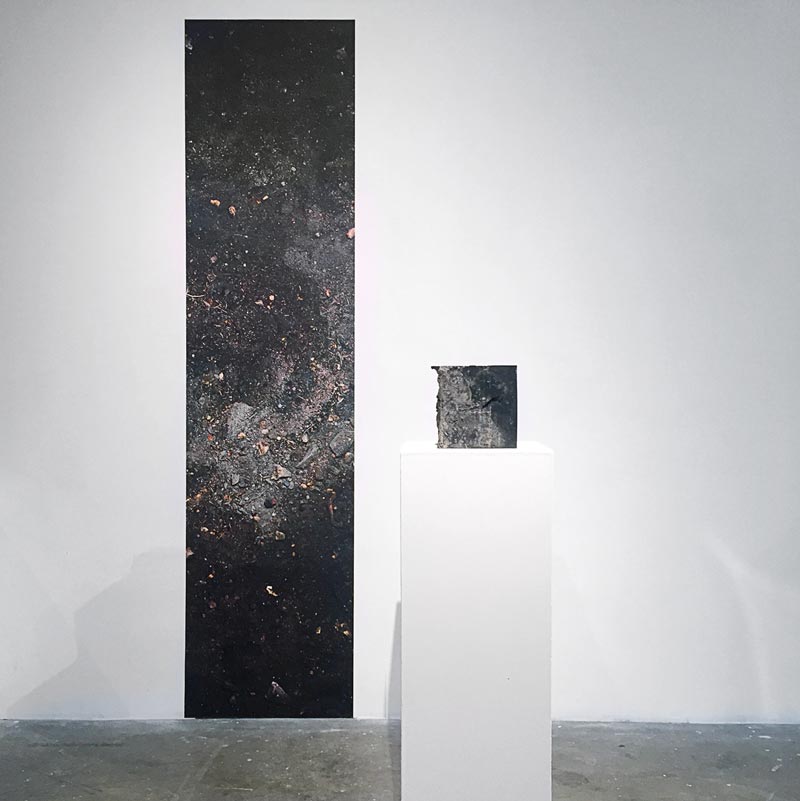
Remnant / La Tuna Canyon (Installation), 2018, epoxy, wildfire debris, inkjet medium, 6.75 x 6.25 x 6.75, 24 x 72 inches
Many artists live by their creative routines, do you have your own studio ritual? What does that look like for you?
I wear my bluetooth earphones. I listen to a lot of audio books while working. But just as often I’m not even listening to anything, but I still have to wear earphones, otherwise I don’t feel settled in. Perhaps it’s symbolic of blocking out the world, or pulling myself into an internal space..
Who are your biggest influences?
Robert Erwin, James Turrell, Lita Albuquerque and the light and space artists in general. I was born and raised in California and I understand the obsession with light and space. It’s like standing on a mountain or really seeing the stars, you come away from feeling small but filled with a kind of understanding, that’s how I feel when I look at their work, somehow both small and powerful.
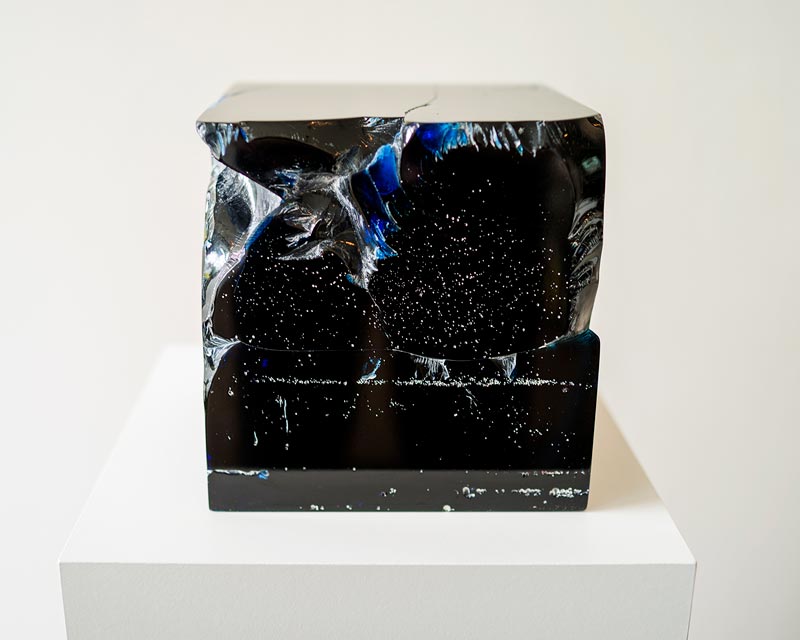
Continued Blue, 2016, epoxy, blue and black dye, 5.5 x 5.5 x 5.5 inches
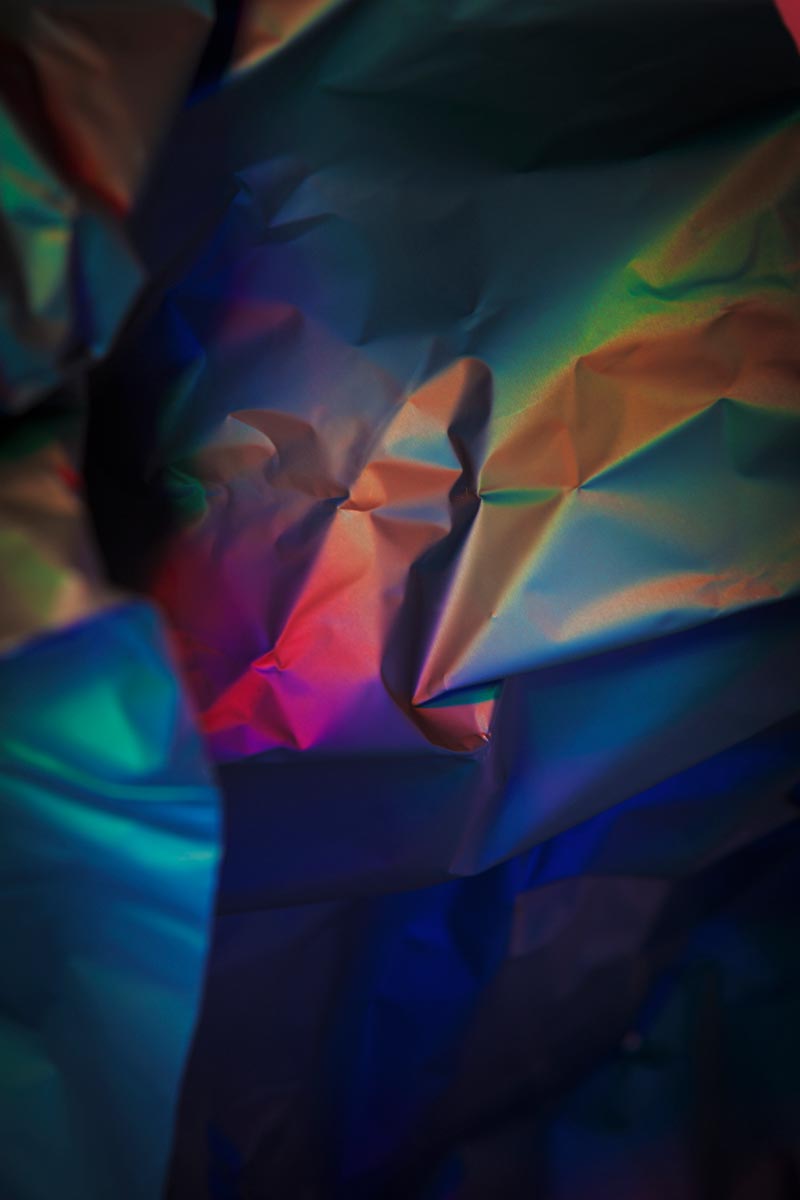 Cinefoil
, 2015, Inkjet Print, 20 x 30 inches
Cinefoil
, 2015, Inkjet Print, 20 x 30 inches
Aesthetically, my new work owes a lot to Henri Rousseau. The disconnect between object and landscape in his work resonated with me in relation to Los Angeles. It’s a reimagined landscape filled with imported plants. And of course the green in his paintings has a life of its own. I was those compositions that I was thinking about when I first started making the bird of paradise installations.
Are there books or films that are an important source of inspiration?
Oh yes, there are so many, but David Batchelor’s “Chromophobia” and the “Luminous and the Grey” are two that I continually go back to. They have never yet failed to inspire or help me understand the world differently. Also Michael Taussig’s “ What Color is the Sacred”. His connection between the shifting climate and the untruthfulness of color always makes me think of Los Angeles. I love Carol Mavor and Rebecca Solnit. For me, reading these authors are like falling into a river: I can’t always articulate the experience, but you leave changed.
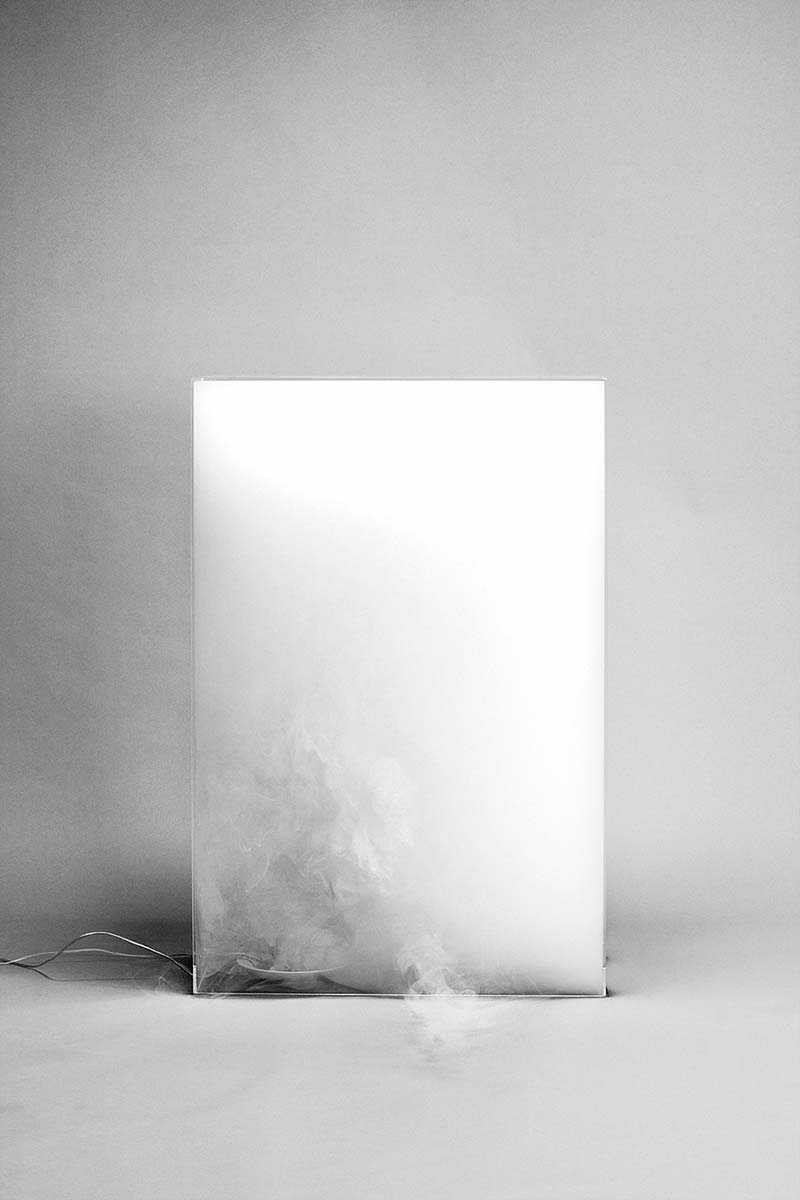 White Smoke, 2019, Inkjet Print, 30 x 40 inches
White Smoke, 2019, Inkjet Print, 30 x 40 inches
How will Innovate Grant contribute to your practice?
In September of 2020 I have a show at “Elephant” art space in Los Angeles. For this I am in the process of making a small publication about the trees and ecology of Southern California. It will be quite an undertaking for me and the grant will go towards the creation of the publication. For which I am incredibly grateful.
What’s the best piece of advice you’ve been given?
You don’t have to know what the work is about before you make it, and in fact you often can’t know what the work is about because it doesn’t yet exist. I would get so caught up in trying to understand what I was making before it was made that I wouldn’t get anything done. Now it often takes me a long time to fully understand what the work is about while it sits in my studio. Meaning is something that is constantly evolving.
What is the best advice you would give to other artists?
Go read, go look at art. You can’t make work in a vacuum.
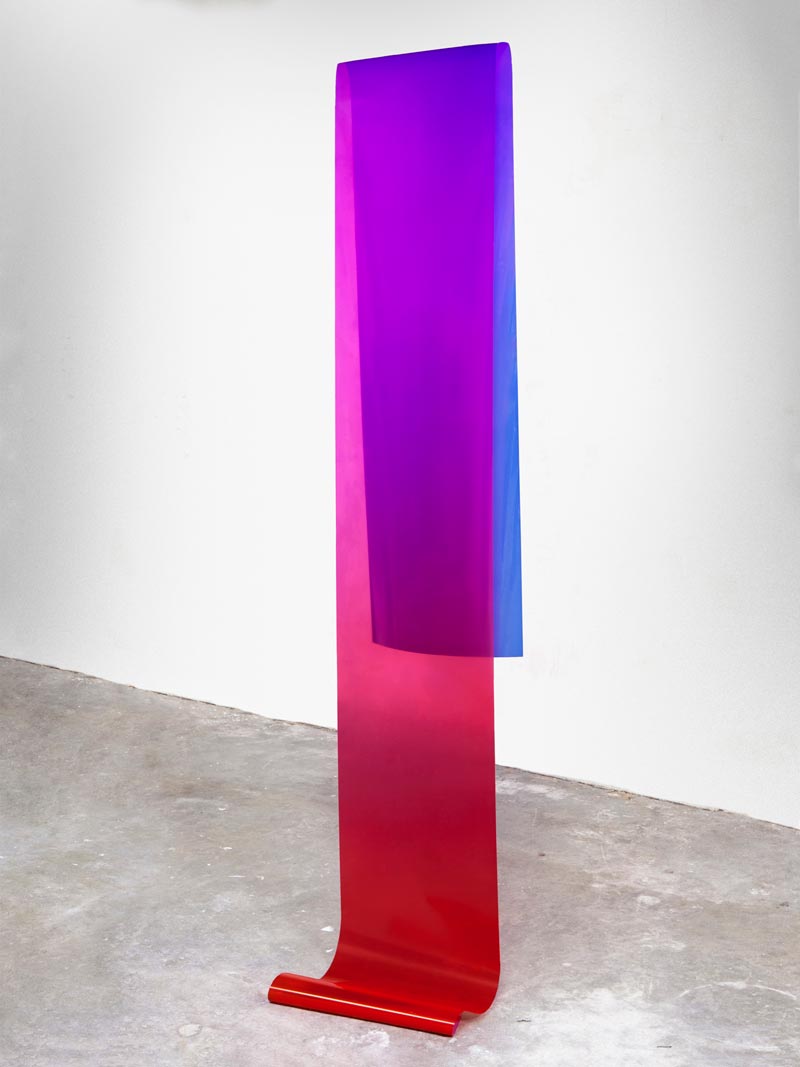 Spectral Fold, 2018, Clear Inkjet Film, 24 x 85 x 36 inches
Spectral Fold, 2018, Clear Inkjet Film, 24 x 85 x 36 inches
View Christine Atkinson's Portfolio
Stay up to date with Christine Atkinson
Instagram @catkinson03
www.catkinson.com/
